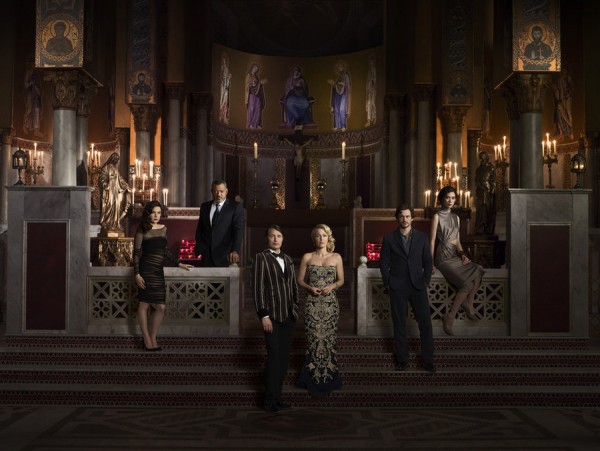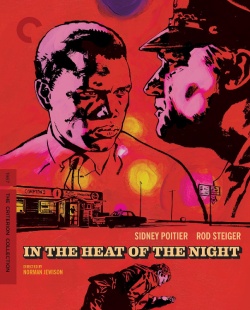ATTENTION: Hannibal series finale spoilers below:
This modern reboot and retooling culture often makes people cynical. In a world where we’ve gotten a modern tech Frankenstein TV series or a mini-series remake of Rosemary’s Baby, it’s easy to be dubious about the idea of a new television adaptation of Thomas Harris’ Hannibal Lecter character. This is especially the case with a prequel series that would supposedly cover the events from before Red Dragon. I mean, we’ve all been burned by a prequel origin story at some point or another and the idea of turning the works of Thomas Harris into what was initially advertised as a police procedural in the vein of a CSI would naturally draw many fans of the character away. However, not only did the NBC series Hannibal surpass the meager expectations of a supposed cash grab, but it managed to transcend any previous version of the character. Yes, even the extremely iconic portrayal by Anthony Hopkins in Silence of the Lambs, Red Dragon or the Hannibal film adaptation… but especially the latter.
Of course, it’s hard for Hopkins to compete with the character development potential of a full on TV series over three films of varying quality with three very different creative minds behind them. With the TV series, Lecter (as played with subtle but effective character quirks by Mads Mikkelsen) was guided by the ever present light of series creator Bryan Fuller. Fuller at first glance doesn’t seem like the type to adapt an idea as dark as a sophisticated serial cannibal, having cut his teeth by creating cult favorite shows like Dead Like Me or Pushing Daisies. Yet, despite the very bright quirkiness of those shows, Fuller clearly has a very tactful sense of darkness buried within his style. After all, both of those shows are built around major themes of death and rebirth, with sprinkles of very dark humor throughout. Not to mention, much like the pie making protagonist of Daisies, Lecter shows a true knack for making some tantalizing morsels that not only makes cannibalism delicious, but sets up the main dynamic Lecter has with pretty much any character in the show; predator to prey. Hannibal clearly has that influence firmly intact, but takes a much more contemplative and sinister approach. Unlike the more brazen whimsical color of those other two shows, Fuller decided to apply a much more grim aesthetic to his approach that bathed the screen in a dulled yet nuanced array of colors as people’s throats were slit or body parts were arranged in a creative display, often in what investigator Will Graham called his “mind palace.” One of the more memorable aspects of the show were those creative corpse displays that sent simultaneous shivers and immersed wonder, particularly this unforgettable arrangement from the second season episode Futamono. This kind of stuff was not only grotesquely gorgeous to look at, but also pushed the boundaries of what kind of gore could be shown on network television.
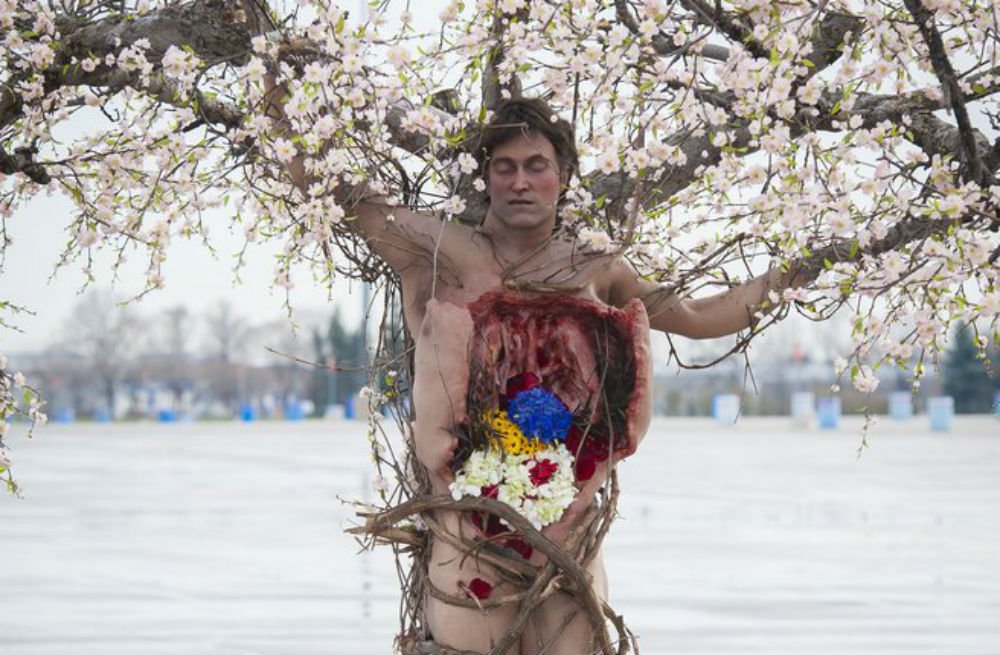
Of course, Bryan Fuller’s interests with the show were never merely cosmetic. As evident in every single character in Hannibal‘s great ensemble, he and his staff had a clear fascination with Thomas Harris’ universe and its potential for serialized story telling. In its first season, the show started as more of a traditional procedural, with Hugh Dancy’s paranoid Will Graham searching for The Chesapeake Ripper and finding a parental fondness for Abigail Hobbs, the daughter of a murderer Will gunned down in self defense. As he dealt with his mental instability, Graham sought comfort in two parental figures of his own; the understanding yet consistently professional Jack Crawford and his seemingly attentive yet secretly manipulative psychiatrist Hannibal Lecter. In earlier versions of the Red Dragon storyline, the relationship between Lecter and Graham was one of betrayed colleagues reluctantly meeting back up, while Crawford was more of a long time friend and professional colleague. Both dynamics play a role in Fuller’s series, but it’s much more complex than that. Over the course of the show, Crawford attempts to use Will’s sixth sense for snuffing out murderers in his mind palace at crime scenes without much consideration for his well being, which ends up costing him his career and eventually sees his personal life wither away from him once his wife dies. Meanwhile, Hannibal turns from being a mere soundboard for Will’s psychosis to being a puppet master that manipulates Will in a more slyly sinister and not-so-subtly sexually tense fashion.
The common joke/Tumblr fan art showcases the sensual imagery and connection between Will and Hannibal, but it’s based in so much more than a mere internet desire for slash fiction that warped relationships like the friendship between Kirk and Spock out of proportion. It’s a relationship that’s inherently a sensual back and forth between these two character, one that’s based in a sense of dominance of one over the other. Hannibal supports Will’s darker nature in a way that gives a layer of tragedy to Will, who merely wants help finding a balance in his sanity. Yet, their relationship mutates so much of the course of the series that the dominant role is pursued by one, but is taken in surprise by the other. After all, Will goes from respecting Hannibal to trying to expose his identity as the Chesapeake Ripper to hunting him into capture and eventually seeking his help begrudgingly. This cat and mouse nature was the true heart of the show, as Hannibal sought to destroy Will by ultimately consuming his essence, both a figurative melding of their two personalities and by literally eating his flesh. Even the other characters had to marvel at the connection the two had, sometimes to the point of accusing Will of being a genuinely unstable accomplice. All of that tension culminates wonderfully in the series finale, with the two of them finding some sort of perceived peace after a bizarrely gorgeous blood bath of a fight against Francis Dolarhyde before Will takes the both of them for a tumble into a potentially watery grave. This is the perfect metaphor for acceptance of their symbiotic relationship, Will knowing that the only way he can actually get rid of Hannibal after so many attempts is to finally take the cannibal out with him.
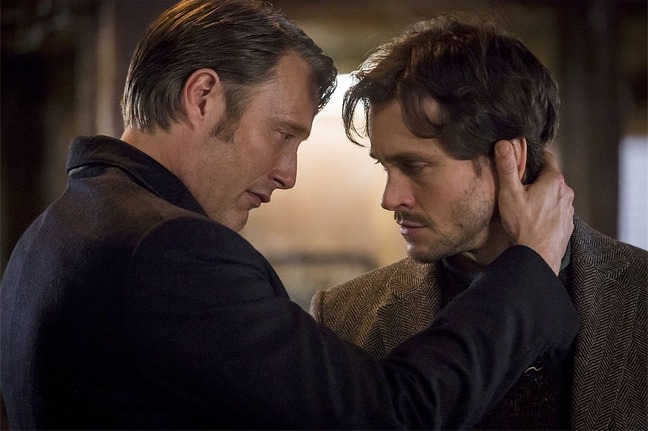
Now, from the outside the show might sound like a lengthy fan fiction, with constant sexual teasing and characters in clearly lethal situations that they somehow always manage to escape. Bryan Fuller himself even referred to the show as his fan fiction that he wished to share with fellow fans of the Harris novels. Despite the trappings seeming like officially licensed fan fiction, it’s officially licensed fan fiction written by a fan with a firm understanding of character and a willingness to mold existing material into a brand new story that knows the thematic drive of the characters. Notable recurring examples of this include the various side villains from novels. There’s Mason Verger, as played by both Michael Pitt and Joe Anderson, who turned from a static deformed pedophile with a grudge in previous iterations to an aristocratically corrupted boogieman who’s deformities are ultimately the least monstrous thing about him. His slimy motives and underestimation of others ultimately undoes him, allowing his twin sister Margot to destroy his patriarchal reign over her life, their fortune & his creepy attempts to have a child that keeps the Verger bloodline going. This dethroning of what Mason sees as traditional blue blood values is even further emphasized by Margot’s romantic blossoming with Alana Bloom, a psychiatry student who had brief flirtations with Will and was romantically attached to Hannibal before becoming aware of his misdeeds. Their open chemistry completely subverts the veneer that Mason tries to hide behind, which grows to the point of attempting to literally take Will Graham’s own face and surgically attach it to himself.
Similarly, the major bad of Season 3’s latter half attempts to dominate over others by carving a new identity for himself. Francis Dolarhyde seeks identity through visuals, basking his flawed form in an inked tattoo of the Red Dragon visage that he worships. Dolarhyde’s own insecurities about himself are buried under a deranged sense of purpose via metamorphosis and mirrored imagery. Initially, his victims are adorned with glass over their eyes, allowing any to see their reflection in the surface as the Dolarhyde films them with his Super 8 camera. They transform into horrific gazers at his work as the Tooth Fairy serial killer, something he is ashamed to see them staring at. He wants to abandon his Tooth Fairy persona and have people instead look at him in awe as he pursues the work of his desired guise; The Great Red Dragon. Francis nearly finds a small bit of human compassion from the blind photo developer Reba McClane, who doesn’t feel slighted by her handicap and merely wants to embrace the meek Dolarhyde for who he really is rather than the facade he wants to become. This is where Fuller’s adaptation is probably closest to Harris’ novel, but manages to flourish aspects of Dolarhyde’s personality to fit a more grand animalistic visage that’s perfectly portrayed through Richard Armitage’s warped physicality. Dolarhyde is still perhaps the most complex side character in the entire Hannibal canon, with his psychotic killer nature being grounded by the potential for a real relationship that’s genuinely tragic.
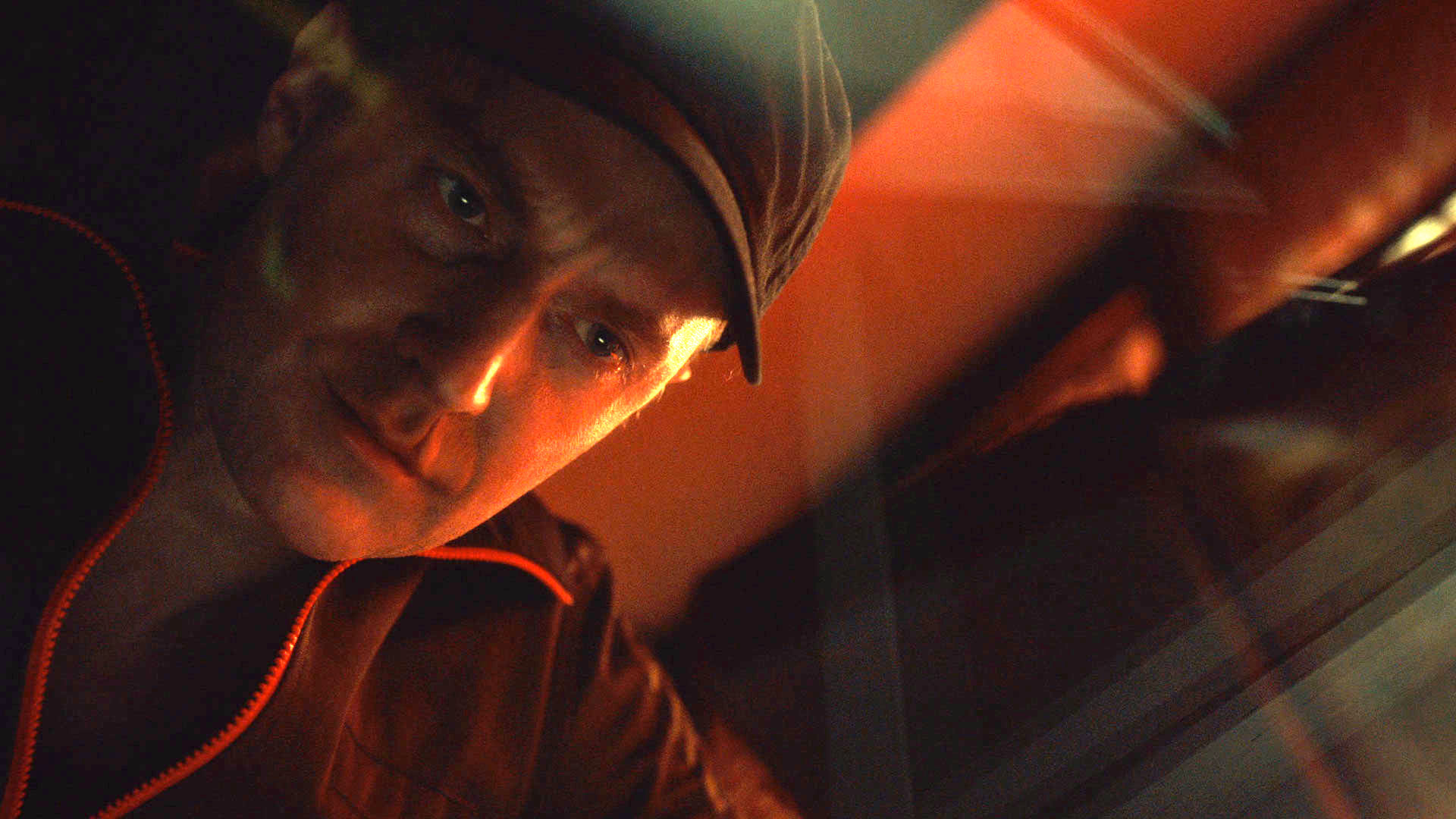
There are others in the Hannibal TV series who grow from tragedy, whether inflected on them or by them. There’s Dr. Abel Gideon (played with an almost Anthony Hopkins-esque dull wit by Eddie Izzard), a transplant surgeon who starts taking credit for Hannibal’s Chesapeake Ripper killings, only to end up with his own foot literally in his mouth. There’s also psychiatrist Dr. Bedelia Du Maurier (played in a cold yet seductively unnerving fashion by Gillian Anderson), who secretly conspires to leave the country with Hannibal while giving Will Graham faulty psychiatry advice before being at Hannibal’s mercy both in Italy and in a disturbed permanent mental fashion even after he leaves her. Another is Dr. Frederick Chilton (portrayed in a cleverly weasel fashion by Raúl Esparza), a psychiatrist turned true crime author that makes money on the backs of telling tales about Hannibal, only to have the mouth he so often uses to tell his stories bitten and burnt off him by Dolarhyde. They’re all layered fascinating characters with clear scars on them from their encounters with Hannibal, whether physical or mental. They help build the tapestry of anguish and horror that Hannibal leaves in his wake.
So, it’s still such a shame to see a show like Hannibal end, especially on a network as starved for truly engaging content as NBC. What Bryan Fuller and his crew managed to pull off here should be the golden standard not just for television, but any medium attempting to relaunch a beloved property. In this day and age, brand marketing is the gold standard. Yet more often than not, we get the same pandering tripe that simply banks on nostalgic recognition rather than an adaptation that takes risks and has its own vision for the material. Fuller took the risks few others will take and somehow managed to get three consistently engrossing seasons out of it. That’s more than most shows on any network can truly hope for. Plus, the ending was such a damn perfect wrap up to the major arc of the series that even if Fuller somehow managed to make a TV movie or a fourth season on a different platform, I honestly wouldn’t want it. The Wrath of the Lambs was one of the most satisfying series finales to a show I’ve ever been genuinely invested in, so having a follow up that tried to cover elements from the Silence of the Lambs storyline would just feel unnecessary. Hannibal was about Lecter and Will Graham having their eternal struggle that served as a demented whirlwind romance and they had their final embrace; one that sent them falling to mutual self destruction.

